Apple Unveils New iPad Pro: A12Z Bionic, Camera w/ Depth Sensor for AR, Keyboard w/ Trackpad
by Anton Shilov on March 18, 2020 1:00 PM EST- Posted in
- Tablets
- Apple
- Smartphones
- Mobile
- iPad Pro

Apple’s iPad Pro has always been about bringing tablets closer to laptops, in a bid to cater professional users and satisfy their requirements. Today, Apple announced its 4th Generation iPad Pro, that on one hand further blurs the gaps between tablets and notebooks, but on the other hand uses the key advantage of the former over the latter — portability — to enable new use cases. Among the highlights of the 2020 iPad Pro are its improved camera with a depth sensor (which Apple for describes as a LiDAR module, more on that later), trackpad support (which requires a new keyboard), and faster connectivity.
The new Apple iPad Pro 2020 resemble the company’s previous-generation professional tablets introduced 1.5 years ago: the latest iPad Pros feature the same design with relatively thin bezels, coming in Space Gray or Silver aluminum chassis, and featuring 11-inch (2388×1668) or a 12.9-inch (2732×2048) Retina display with a smooth 120 Hz refresh rate, 600 nits brightness. Since the new tablets use exactly the same chassis as their predecessors, they have the same dimensions, however their weight has increased due to the new internals — 473 grams (1.04 pounds) for the 11-inch Wi-Fi+4G model, and 643 grams (1.41 lbs) for the 12.9-inch Wi-Fi+4G model.
Speaking of architecture, it is necessary to note that the new 4th Generation Apple iPad Pro tablets are based on the A12Z Bionic application processor, a revamped version of the A12X Bionic system-on-chip that powers previous-generation iPad Pros. The new SoC received an eight-cluster GPU (vs. a seven-cluster GPU in case of the A12X), tuned performance controllers, and an enhanced thermal architecture, which might mean higher clocks for eight general-purpose CPU cores. We don't have any more specific information on the A12Z, with the most important question whether this is actually a new design, or just a re-binned variant of the A12X (update: it has since been confirmed to be another A12X bin).
With improved CPU and GPU performance, the 2020 Apple iPad Pro gets closer to advanced notebooks as horsepower provided by the A12Z promises to be similar to that of mainstream x86 CPUs.
In addition to the new SoC, one of key improvements of the new iPad Pro tablets is their new main camera that now features a 12 MP wide camera module, a 10 MP ultrawide camera module, a LED flash, and a 3D depth sensor that can measure the distance to surrounding objects up to 5 meters away both indoors and outdoors.
Apple calls the new module a LiDAR scanner, however we don't know if this actually is an actual LiDAR - the technical definition of a LiDAR is a module that uses an illuminator (Most of the time, a laser, hence the name) and a scanning beam. If Apple has been able to actually include such technology, that would quite a novelty and first in the industry. It's however also possible that Apple is doing a marketing experiment here and the technology behind the sensor would simply be similar to the time-of-flight (ToF) sensors that we've seen from other vendors out in the market for the last year.
A depth sensor can be used to make photos with Bokeh effect, or for various augmented reality (AR) applications, which enhances use cases for Apple’s professional tablets.
On the connectivity side of matters, the new iPad Pros feature a USB Type-C connector, a Wi-Fi 6 chip that supports transfer speeds up to 1.2 Gbps, Bluetooth 5.0, and an optional 4G/LTE modem that now supports up to 30 bands. Apple does not disclose which modem it uses, but it looks like it is going to offer some improvements when compared to the modem used for previous-generation professional tablets from the company.
The fourth key enhancement that the new iPad Pro tablets have over predecessors is not a hardware advance, but rather an iPadOS 13.4 improvement. The new version of the operating system now supports keyboards with trackpads. Apple says that the cursor on iPadOS does not mimic its behavior on macOS, but is optimized for iPad’s realities. Meanwhile, multi-touch gestures are fully supported. The manufacturer says that the addition of a trackpad — which again brings the tablet closer to laptops — is meant to improve performance in applications that require typing, as now users will not have to take their hands off the keyboard to interact with UI. Apple claims that the trackpad works smoothly with existing applications for iPadOS, but developers can further adjust their products to take advantage of multi-touch gestures and other perks that trackpads provide.
The first keyboard for iPad Pro to feature a trackpad is Apple’s own Magic Keyboard for iPad Pro. The unit features backlit keys with a scissor mechanism and a 1 mm travel distance. The keyboard attaches to the tablet magnetically and can be adjusted to a comfortable viewing angle when typing. The device even has charging capabilities with USB-C port to enable a passthrough charging, which allows to connect an external display or a storage device to tablet’s own USB-C interface. In addition to the latest iPad Pros, the new Magic Keyboards for 11-inch and 12.9-inch tablets are fully compatible with previous-generation iPad Pro 11 and iPad Pro 12.9 devices.
Other highlights of the new 2020 iPad Pro tablets include Face ID (enabled by a 7MP TrueDepth camera), compatibility with Apple Pencil, four speakers, five microphones, a three-axis gyro, an accelerometer, an ambient light sensor, and a barometer.
|
Apple iPad Pro Comparison |
||||
| iPad Pro 11" (2020) |
iPad Pro 12.9" (2020) |
iPad Pro 11" (2018) |
iPad Pro 12.9" (2018) |
|
| SoC | Apple A12Z 4x Apple Vortex 4x Apple Tempest 8-cluster A12 GPU |
Apple A12X 4x Apple Vortex 4x Apple Tempest 7-cluster A12 GPU (+1 disabled) |
||
| Display | 11-inch 2388x1668 IPS LCD DCI-P3, 120Hz |
12.9-inch 2732x2048 IPS LCD DCI-P3, 120Hz |
11-inch 2388x1668 IPS LCD DCI-P3, 120Hz |
12.9-inch 2732x2048 IPS LCD DCI-P3, 120Hz |
| Dimensions | 247.6 x 178.5 x 5.9 mm 471 / 473 grams (WiFi / LTE) |
280 x 214.9 x 5.9 mm 641 / 643 grams (WiFi / LTE) |
247.6 x 178.5 x 5.9 mm 468 / 468 grams (WiFi / LTE) |
280 x 214.9 x 5.9 mm 631 / 633 grams (WiFi / LTE) |
| RAM | ? | ? | ? | ? |
| NAND | 128 GB / 256 GB / 512 GB / 1 TB | 64 GB / 256 GB / 512 GB / 1 TB | ||
| Battery | ? Wh | ? Wh | 29.37 Wh | 36.71 Wh |
| Front Camera | 7MP, f/2.2, Auto HDR, Wide Color Gamut, Retina Flash | 7MP, f/2.2, Smart HDR, Wide Color Gamut, Retina Flash | ||
| Rear Camera | 12MP, f/1.8, PDAF, wide-angle 10MP, ƒ/2.4 aperture, ultra-wide-angle 125° FOV Depth sensor (LiDAR) Smart HDR Wide Color Gamut True Tone Quad-LED flash |
12MP, f/1.8, PDAF, Smart HDR Wide Color Gamut True Tone Quad-LED flash |
||
| Cellular | 2G / 3G / 4G LTE (30 bands) | 2G / 3G / 4G LTE (29 bands) | ||
| SIM Size | NanoSIM | NanoSIM | ||
| Wireless | Wi-Fi 6 2x2 MIMO, Bluetooth 5, GPS/GLONASS |
Wi-Fi 5 2x2 MIMO, Bluetooth 5, GPS/GLONASS |
||
| Connectivity | USB-C Apple Smart Connector |
|||
| Launch OS | iOS 13.4 | iOS 12.1 | ||
| Launch Price | Wi-Fi: $799 (128GB) $899 (256GB) $1099 (512GB) $1299 (1TB) Wi-Fi + LTE: $949 (128GB) $1049(256GB) $1249 (512GB) $1449 (1TB) |
Wi-Fi: $999 (128GB) $1099 (256GB) $1299 (512GB) $1499 (1TB) Wi-Fi + LTE: $1149 (128GB) $1249 (256GB) $1449 (512GB) $1649 (1TB) |
Wi-Fi: $799 (64GB) $949 (256GB) $1149 (512GB) $1549 (1TB) Wi-Fi + LTE: $949 (64GB) $1099 (256GB) $1299 (512GB) $1699 (1TB) |
Wi-Fi: $999 (64GB) $1149 (256GB) $1349 (512GB) $1749 (1TB) Wi-Fi + LTE: $1149 (64GB) $1299 (256GB) $1499 (512GB) $1899 (1TB) |
Now, time to talk about pricing of the new iPad Pro. Entry level Wi-Fi-only and Wi-Fi+LTE models now feature 128 GB of NAND flash storage, yet carry the same price tags as their predecessors: the cheapest iPad Pro 11-inch comes in at $799, whereas the cheapest iPad Pro 12.9-inch is $999. More advanced SKUs with 256 GB, 512 GB, or 1 TB of storage actually became more affordable than their direct predecessors, as some got $50 cheaper, whereas others lost a rather whopping $250, which will please users with significant storage requirements. The new units are available for pre-order at Apple.com and Apple Store app today with retail availability starting next week.
As far as the price of the Magic Keyboard for iPad Pro is concerned, the unit is going to cost $299 for the 11-inch model, $349 for the 12.9-inch model, and will start shipping this May. The addition of this keyboard to a decently configured iPad Pro naturally makes the whole package cost like an entry-level laptop, which, again, blends the difference between the iPad Pro and the MacBook Air.
Related Reading:
- The 2018 Apple iPad Pro (11-Inch) Review: Doubling Down On Performance
- Apple Announces New 11" and 12.9" iPad Pros with A12X SoC
- Apple Refreshes iPad Pro Lineup: A10X Fusion SoC for 10.5-inch, 12.9-inch Models
- The 9.7" iPad Pro Review
- The iPad Pro Preview: Taking Notes With iPad Pro
Source: Apple


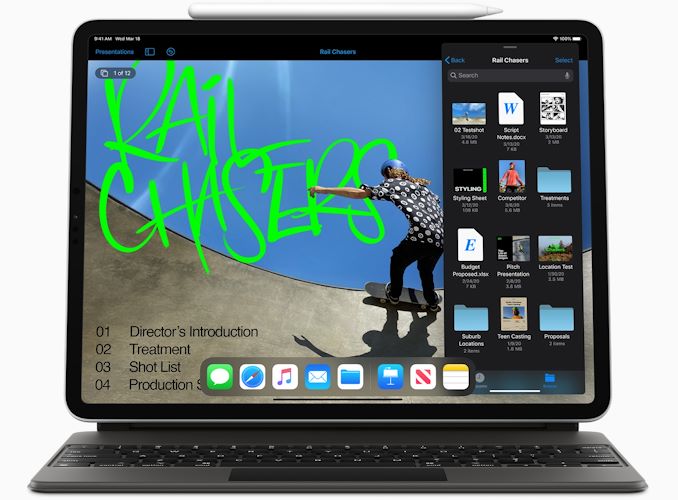
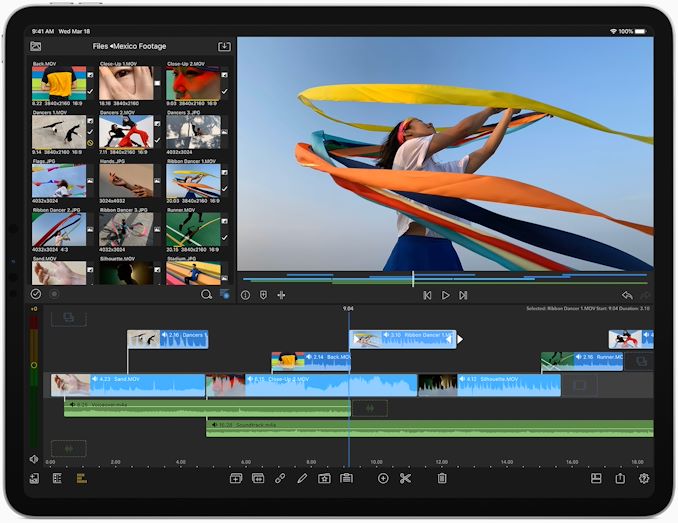
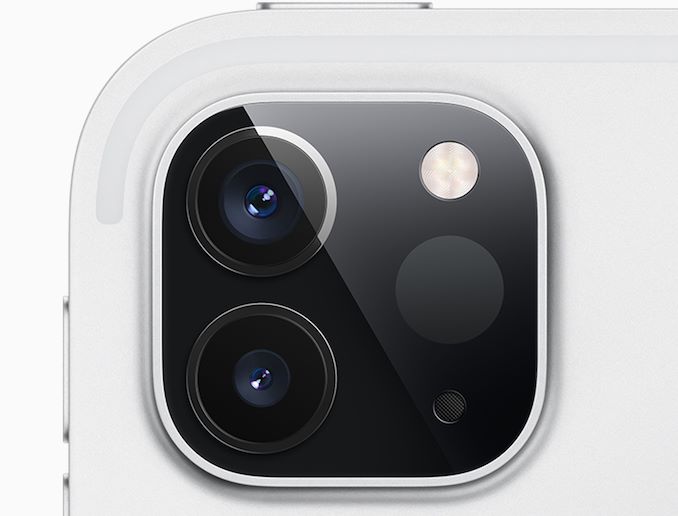
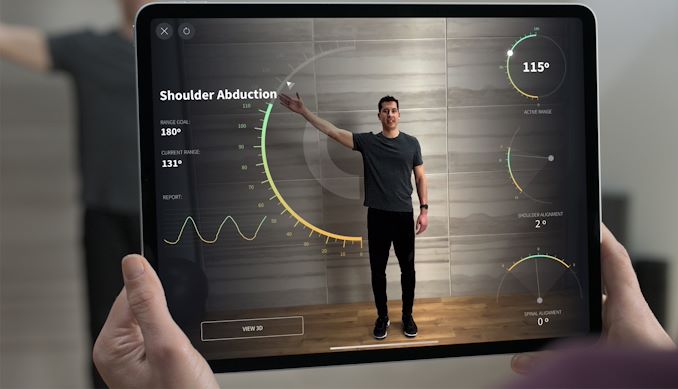
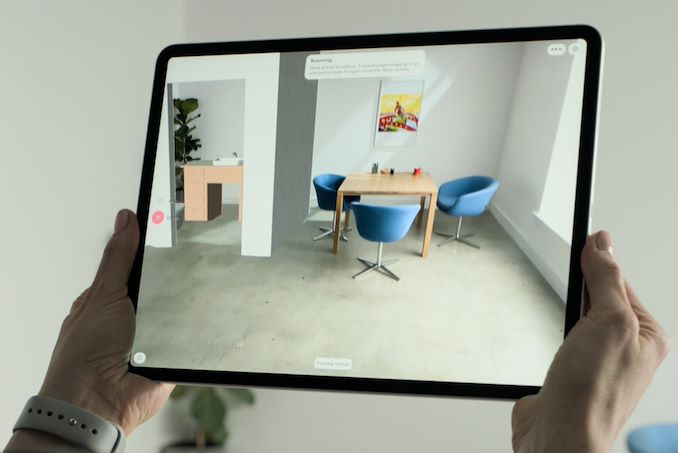
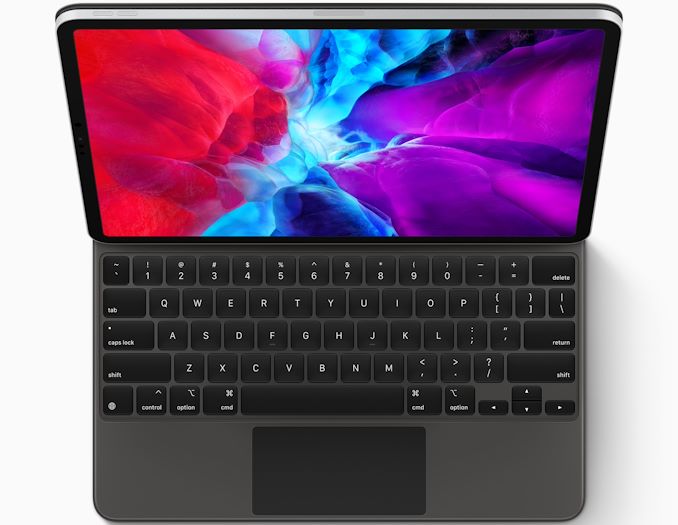
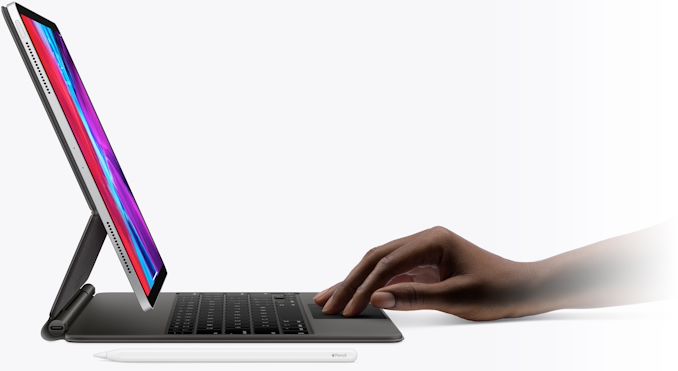








59 Comments
View All Comments
HardwareDufus - Wednesday, March 18, 2020 - link
wow, the top of the line 13" table w/ keyboard will retail for $1998 together.. yeah.. that's pricey... i mean it's priced 100% above what it should be ($999 would seem reasonable for the combo).vFunct - Wednesday, March 18, 2020 - link
That's about how much the last generation top-of-the-line iPad Pro + Keyboard was.s.yu - Wednesday, March 18, 2020 - link
IMO if the keyboard adds a headphone jack and another C port then it's worth it, otherwise no.willis936 - Wednesday, March 18, 2020 - link
Can it output stl files from real world objects?oRAirwolf - Wednesday, March 18, 2020 - link
Not if it is using a time of flight sensorblackcrayon - Thursday, March 19, 2020 - link
I think Shapr3D showed basically just that in the Apple demo video. Probably need the (expensive) full version of that app for that feature though...GC2:CS - Wednesday, March 18, 2020 - link
Well A12Z seems interesting.There was never a chip by Apple that was meant to be just an itterative polish on the same archichitecture. (Save for som die shrunk A5, but those were exactly thy same but smaller I think).
They just keep churning more or less updated uArch every single year since 2012. Unlike other companies
A12Y would be a ear breaker but Z is still much worse than X. Why not keep the same name ? Does this means we will se multiple lineups ? iPhone iPad iBook ? Or is this just a one time apperance.
Is it 7nm+ ? Is it LPDDR5 ? Is it 6GB RAM base ? Just really interested in how this repackaged chip without any major overhauls performs, and if there are some efficiency gains like with a hypothetical A13X.
It shows that Apple only makes some of their SoC go with an X. Big generations like A7,A11,A13 probably took so much effort an X variant was not even thought about in the first place. But they could not just release it with an A12X right ?
Anand, just give us some benchmarks already !
blackcrayon - Thursday, March 19, 2020 - link
A12X is in the last (2018) gen iPad Pro already. Without knowing and tech details, it sounds like the A12Z has the same CPU cores, but additional (or more advanced) GPU cores. And yes all of this year's have 6 GB of RAM.Stephen_L - Thursday, March 26, 2020 - link
It seems like apple built an 8 GPU core A12X but with 1 core disabled possibly due to 7nm still not mature enough to build such a large chip on, so when it get mature they enable it and call it the A12Z. So my guess will be those are the exact same die.oRAirwolf - Wednesday, March 18, 2020 - link
It pains me to see Apple continually release tablets with great aspect ratio, high refresh rate, quality build, blazing fast storage, and super high end SoCs while us Android users are left assed out. The best we can do is a Samsung tablet like the galaxy tab s5e I am typing this on or the galaxy tab s6. We are stuck with bloated Android implementations, bad aspect ratios, low refresh rate screens, and mid grade internals. It is infinitely frustrating. I wish OnePlus would step up to the plate and give us an Android tablet worth getting excited over.